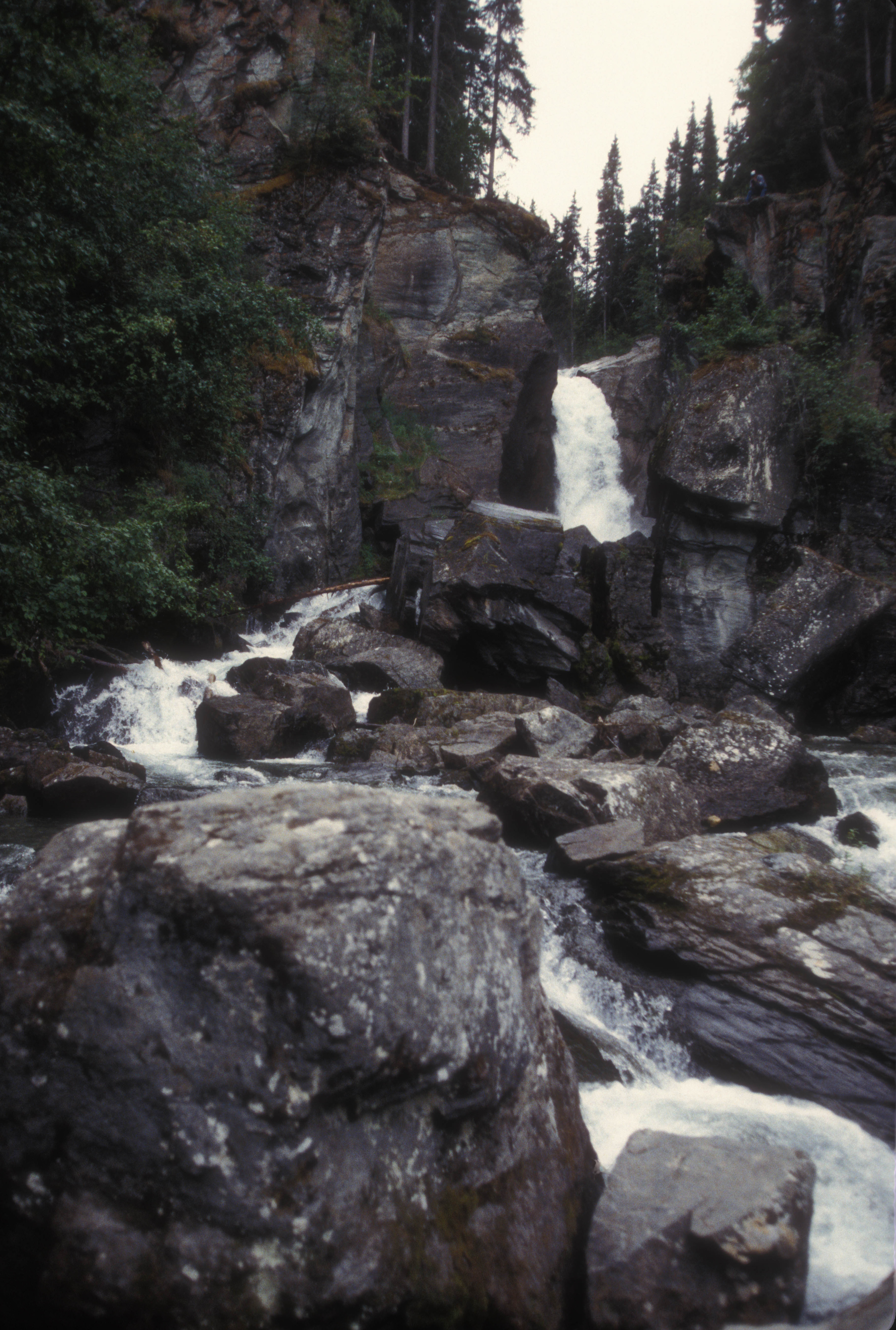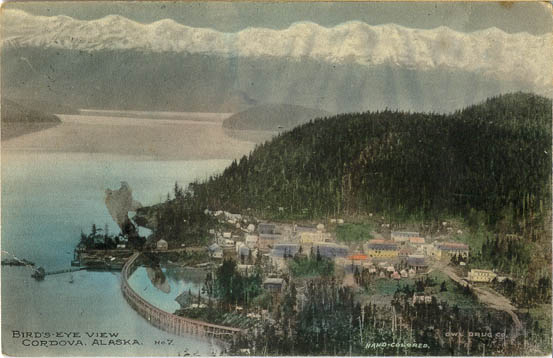|
Valdez–Cordova Census Area, Alaska
Valdez–Cordova Census Area was a census area located in the state of Alaska, United States. As of the 2010 census, the population was 9,636. It was part of the Unorganized Borough and therefore has no borough seat. On January 2, 2019, it was abolished and replaced by the Chugach Census Area and the Copper River Census Area. Geography According to the U.S. Census Bureau, the census area has a total area of , of which is land and (15.1%) is water. Adjacent boroughs and census areas * Southeast Fairbanks Census Area, Alaska – north * Yakutat City and Borough, Alaska – southeast * Kenai Peninsula Borough, Alaska – west * Municipality of Anchorage, Alaska – west * Matanuska-Susitna Borough, Alaska – west * Yukon Territory, Canada – east National protected areas * Alaska Maritime National Wildlife Refuge (part of Gulf of Alaska unit) ** Middleton Island * Chugach National Forest (part) * Tetlin National Wildlife Refuge (part) * Wrangell-St. Elias National Park ... [...More Info...] [...Related Items...] OR: [Wikipedia] [Google] [Baidu] |
Kennecott, Alaska
Kennecott, also known as Kennicott and Kennecott Mines, is an abandoned mining camp in the Copper River Census Area in the U.S. state of Alaska that was the center of activity for several copper mines. It is located beside the Kennicott Glacier, northeast of Valdez, inside Wrangell-St. Elias National Park and Preserve. The camp and mines are now a National Historic Landmark District administered by the National Park Service. It was declared a National Historic Landmark in 1986. and History In the summer of 1900, two prospectors, "Tarantula" Jack Smith and Clarence L. Warner, a group of prospectors associated with the McClellan party, spotted "a green patch far above them in an improbable location for a grass-green meadow." The green turned out to be malachite, located with chalcocite (aka "copper glance"), and the location of the Bonanza claim. A few days later, Arthur Coe Spencer, U.S. Geological Survey geologist independently found chalcocite at the same location. ... [...More Info...] [...Related Items...] OR: [Wikipedia] [Google] [Baidu] |
Alaska Maritime National Wildlife Refuge
The Alaska Maritime National Wildlife Refuge (often shortened to Alaska Maritime or AMNWR) is a United States National Wildlife Refuge comprising 2,400 islands, headlands, rocks, islets, spires and reefs in Alaska, with a total area of , of which is wilderness. The refuge stretches from Cape Lisburne on the Chukchi Sea to the tip of the Aleutian Islands in the west and Forrester Island in the southern Alaska Panhandle region in the east. The refuge has diverse landforms and terrains, including tundra, rainforest, cliffs, volcanoes, beaches, lakes, and streams. Alaska Maritime National Wildlife Refuge is well known for its abundance of seabirds. About 75 percent of Alaskan native marine birds, 15 to 30 million among 55 species, use the refuge. AMNWR also provides a nesting habitat for an estimated 40 million seabirds, representing 80 percent of all seabirds in North America. The birds congregate in "bird cities" (colonies) along the coast. Each species has a specialized nestin ... [...More Info...] [...Related Items...] OR: [Wikipedia] [Google] [Baidu] |
Valdez, Alaska
Valdez ( ; Alutiiq: ) is a city in the Chugach Census Area in the U.S. state of Alaska. According to the 2020 US Census, the population of the city is 3,985, up from 3,976 in 2010. It is the third most populated city in Alaska's Unorganized Borough. The city was named in 1790 after the Spanish Navy Minister Antonio Valdés y Fernández Bazán. A former Gold Rush town, it is located at the head of Port Valdez on the eastern side of Prince William Sound. The port did not flourish until after the road link to Fairbanks was constructed in 1899. It suffered catastrophic damage during the 1964 Alaska earthquake, and is located near the site of the disastrous 1989 Exxon Valdez oil tanker spill. Today, it is one of the most important ports in Alaska, a commercial fishing port as well as a freight terminal. Valdez is also the terminus for the Trans-Alaska Pipeline System. History The port of Valdez was named in 1790 by the Spanish explorer Salvador Fidalgo after the Spanish naval office ... [...More Info...] [...Related Items...] OR: [Wikipedia] [Google] [Baidu] |
Cordova, Alaska
Cordova ( ) is a city in Chugach Census Area, Alaska, United States. It lies near the mouth of the Copper River, at the head of Orca Inlet on the east side of Prince William Sound. The population was 2,609 at the 2020 census, up from 2,239 in 2010. Cordova was named ''Puerto Córdoba'' (after Córdoba, Spain) by Spanish explorer Salvador Fidalgo in 1790. No roads connect Cordova to other Alaskan communities, so a plane or ferry is required to travel there. In the Exxon Valdez oil spill of March 1989, an oil tanker ran aground northwest of Cordova, heavily damaging ecology and fishing. It was cleaned up shortly after, but there are lingering effects, such as a lowered population of some birds. History In 1790 the inlet in front of the current Cordova townsite was named Puerto Cordova by Spanish explorer Salvador Fidalgo, after Spanish admiral Luis de Córdova y Córdova. The city of Cordova was named after it, although the inlet itself was later renamed the Orca Inlet. Cord ... [...More Info...] [...Related Items...] OR: [Wikipedia] [Google] [Baidu] |
Marriage
Marriage, also called matrimony or wedlock, is a culturally and often legally recognized union between people called spouses. It establishes rights and obligations between them, as well as between them and their children, and between them and their in-laws. It is considered a cultural universal, but the definition of marriage varies between cultures and religions, and over time. Typically, it is an institution in which interpersonal relationships, usually sexual, are acknowledged or sanctioned. In some cultures, marriage is recommended or considered to be compulsory before pursuing any sexual activity. A marriage ceremony is called a wedding. Individuals may marry for several reasons, including legal, social, libidinal, emotional, financial, spiritual, and religious purposes. Whom they marry may be influenced by gender, socially determined rules of incest, prescriptive marriage rules, parental choice, and individual desire. In some areas of the world, arrang ... [...More Info...] [...Related Items...] OR: [Wikipedia] [Google] [Baidu] |
Tagalog Language
Tagalog (, ; ; '' Baybayin'': ) is an Austronesian language spoken as a first language by the ethnic Tagalog people, who make up a quarter of the population of the Philippines, and as a second language by the majority. Its standardized form, officially named ''Filipino'', is the national language of the Philippines, and is one of two official languages, alongside English. Tagalog is closely related to other Philippine languages, such as the Bikol languages, Ilocano, the Bisayan languages, Kapampangan, and Pangasinan, and more distantly to other Austronesian languages, such as the Formosan languages of Taiwan, Indonesian, Malay, Hawaiian, Māori, and Malagasy. Classification Tagalog is a Central Philippine language within the Austronesian language family. Being Malayo-Polynesian, it is related to other Austronesian languages, such as Malagasy, Javanese, Indonesian, Malay, Tetum (of Timor), and Yami (of Taiwan). It is closely related to the languages spoken in the Bi ... [...More Info...] [...Related Items...] OR: [Wikipedia] [Google] [Baidu] |
Spanish Language
Spanish ( or , Castilian) is a Romance languages, Romance language of the Indo-European language family that evolved from colloquial Latin spoken on the Iberian peninsula. Today, it is a world language, global language with more than 500 million native speakers, mainly in the Americas and Spain. Spanish is the official language of List of countries where Spanish is an official language, 20 countries. It is the world's list of languages by number of native speakers, second-most spoken native language after Mandarin Chinese; the world's list of languages by total number of speakers, fourth-most spoken language overall after English language, English, Mandarin Chinese, and Hindustani language, Hindustani (Hindi-Urdu); and the world's most widely spoken Romance languages, Romance language. The largest population of native speakers is in Mexico. Spanish is part of the Iberian Romance languages, Ibero-Romance group of languages, which evolved from several dialects of Vulgar Latin in I ... [...More Info...] [...Related Items...] OR: [Wikipedia] [Google] [Baidu] |
Race (United States Census)
Race and ethnicity in the United States census, defined by the federal Office of Management and Budget (OMB) and the United States Census Bureau, are the Self-concept, self-identified categories of Race and ethnicity in the United States, race or races and ethnicity chosen by residents, with which they most closely identify, and indicate whether they are of Hispanic or Latino (demonym), Latino origin (the only Race and ethnicity in the United States, categories for ethnicity). The racial categories represent a social-political construct for the race or races that respondents consider themselves to be and, "generally reflect a social definition of race recognized in this country." OMB defines the concept of race as outlined for the U.S. census as not "scientific or anthropological" and takes into account "social and cultural characteristics as well as ancestry", using "appropriate scientific methodologies" that are not "primarily biological or genetic in reference." The race cat ... [...More Info...] [...Related Items...] OR: [Wikipedia] [Google] [Baidu] |
Population Density
Population density (in agriculture: standing stock or plant density) is a measurement of population per unit land area. It is mostly applied to humans, but sometimes to other living organisms too. It is a key geographical term.Matt RosenberPopulation Density Geography.about.com. March 2, 2011. Retrieved on December 10, 2011. In simple terms, population density refers to the number of people living in an area per square kilometre, or other unit of land area. Biological population densities Population density is population divided by total land area, sometimes including seas and oceans, as appropriate. Low densities may cause an extinction vortex and further reduce fertility. This is called the Allee effect after the scientist who identified it. Examples of the causes of reduced fertility in low population densities are * Increased problems with locating sexual mates * Increased inbreeding Human densities Population density is the number of people per unit of area, usuall ... [...More Info...] [...Related Items...] OR: [Wikipedia] [Google] [Baidu] |
Census
A census is the procedure of systematically acquiring, recording and calculating information about the members of a given population. This term is used mostly in connection with national population and housing censuses; other common censuses include censuses of agriculture, traditional culture, business, supplies, and traffic censuses. The United Nations (UN) defines the essential features of population and housing censuses as "individual enumeration, universality within a defined territory, simultaneity and defined periodicity", and recommends that population censuses be taken at least every ten years. UN recommendations also cover census topics to be collected, official definitions, classifications and other useful information to co-ordinate international practices. The UN's Food and Agriculture Organization (FAO), in turn, defines the census of agriculture as "a statistical operation for collecting, processing and disseminating data on the structure of agriculture, covering th ... [...More Info...] [...Related Items...] OR: [Wikipedia] [Google] [Baidu] |


.png)





